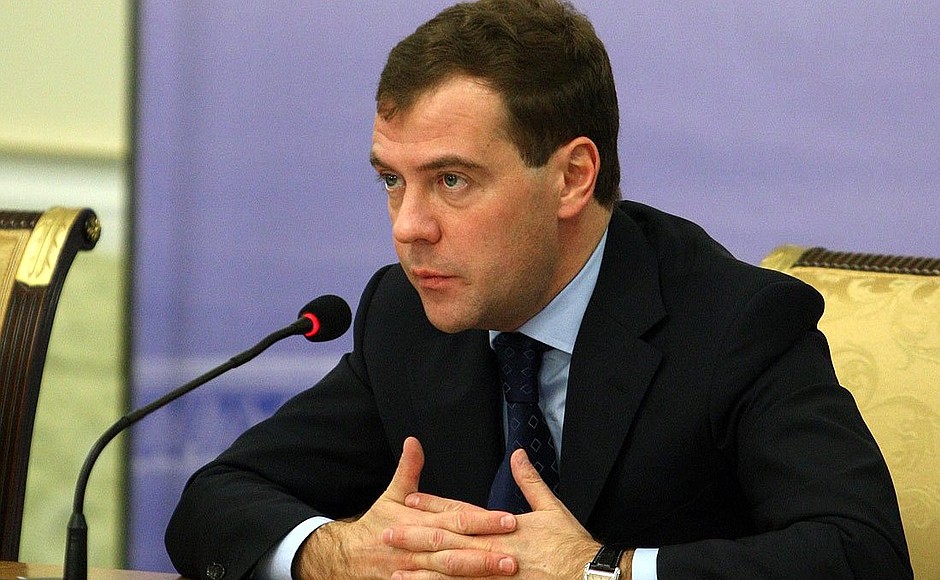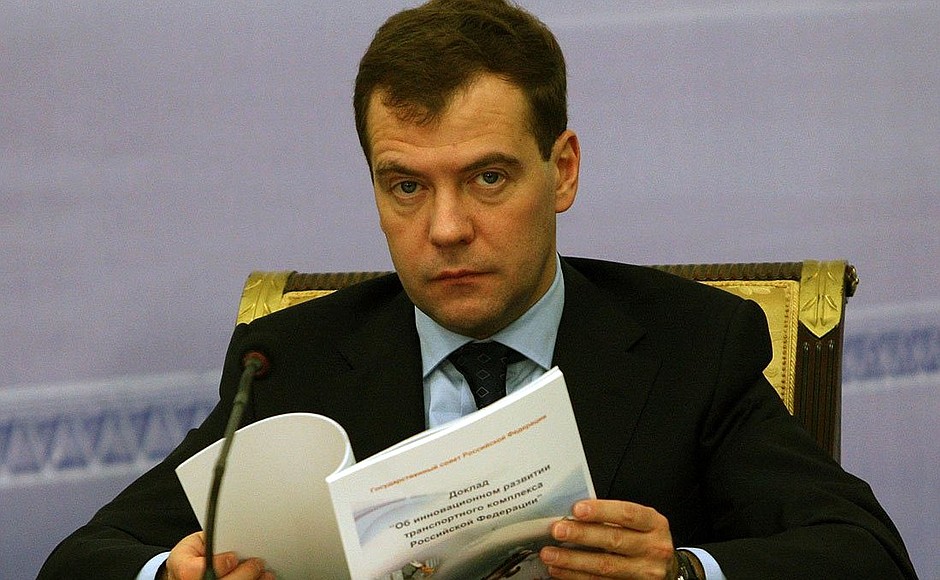President of Russia Dmitry Medvedev: Good afternoon, colleagues,
This State Council Presidium meeting today is examining innovative development in the transport sector. Here in Ulyanovsk we have just witnessed a good event of the kind that is, unfortunately, all too rare, namely the opening of the new bridge, so long in construction and unprecedented in its size and the technology used. That we need innovation in the transport sector is obvious. There was innovation in the past too, but as technology develops, so must we make use of the new possibilities it offers today.
I want to say a couple of words on one of the subjects I mentioned in my Address [to the Federal Assembly]. I said that infrastructure development, including transport infrastructure, calls not only for greater investment but also for putting things in basic order. Really, we need to bring order to all different sectors, including transport.
The lack of modern construction standards and the existing price calculation system make it hard for us to use highly effective technology and greatly increase the costs of first building and then maintaining these facilities. Costs in some cities and regions are particularly high and cannot be justified by geographical location or labour costs alone. There are other factors involved that call for our attention. But whatever the case, these costs simply should not be so high.
The figures I looked at, for example, show that the approximate road construction costs come to 190 million rubles per kilometre in the Novgorod-Ust Luga area, 2 billion rubles per kilometre in Sochi, and 8 billion rubles per kilometre in Moscow. How do we end up with these differences? Of course there are some objective factors involved, but a twenty-fold or thirty-fold difference? We are not building roads on the moon, after all.
I know that the Transport Minister explained just recently, following my Address, why our roads are so expensive. We can always find explanations if we want. The outdated rules and regulations were cited as one cause. This is indeed a problem. But our task is to solve problems, not just offer explanations.
What needs to be done? I think there are several tasks.
First of all, we need to bring our technology and our road and infrastructure construction costs in line with international standards, with European Union standards, for example, as I have already suggested. Usually when this subject comes up I hear the lament that we cannot do this because our conditions are different, our life is different, the Europeans have their standards, but our case is special and we will continue following our own road as we have for the last decades. But we can indeed do this if we go about it with the proper thorough preparation, and when these new standards are ready we could bring them into effect. Or we could simply incorporate European standards into our standards. There are no irresolvable problems in this area.
Experts calculate that one billion rubles invested in infrastructure projects would create almost 5,000 jobs in various sectors. Investing in the transport sector is therefore one of the most effective remedies for the crisis, and this is borne out by other countries’ experience in various situations, including depression periods.
Last year, the Government approved a number of key documents formulating the medium- and long-term goals and tasks in the transport sector. They include, in particular, the transport strategy for the period through to 2030, the rail transport development strategy for the same period, and the federal targeted programme for developing the national transport system over the period 2010–2015. These documents have all been adopted now.
Work is already underway on developing each individual segment within the transport sector, and there are some good examples of development of competitive products.
We saw some of these samples after the ceremony opening the new bridge, and they do indeed make an impression. They are examples of good machinery, technological solutions, the smart economy and smart technology. But they are still too few. We need to speed up their commercialisation and implementation in the relevant sectors, including by making effective use of state procurement mechanisms. We need to produce goods for which there is demand, goods that are at the cutting edge in terms of their economic and environmental standards. If more programmes are required in order to do this, the Government will have to make the necessary decisions. But I think we already have all the programmes we need. We should not be shy either about making use of foreign companies’ experience.
Our second big task is to create incentives making it in contractors’ interests to employ advanced technology in the construction and operation of transport infrastructure. For this, we need to be able to make combined long-term contracts for construction, maintenance and operation of such infrastructure, so as to bring all of these different areas under one contract: the construction work, and perhaps also the facilities’ maintenance and operation.
Third, as our colleagues have mentioned, we need to continue improving our rules and regulations. In particular, we need to pass laws on organising high-speed motor road and rail links.
We also need to improve the system for certifying goods and services. Ideally, this should be a unified system rather than having the separate agencies with their own procedures. This would enable us to speed up the time it takes to get new developments into use.
We need to take a careful look at why it is that concession agreements are still performing so poorly here. There are hardly any of them. I can name a few examples, but I think my colleagues will speak about this subject. We put our sweat and blood into bringing in this system of concession agreements. Much hard work and effort went into these decisions and we had to cross numerous obstacles to get them through. If there are objective problems then we need to amend the law on concessions, and if it is individual civil servants causing the problems, then we need to sort things out with these civil servants.
Fourth, we need to establish research and education centres for innovative transport development at the leading transport sector universities and scientific research institutes. We need to support the most promising new goods and technology, including through grants and prizes at federal and regional level.
Now let’s begin our discussion.

